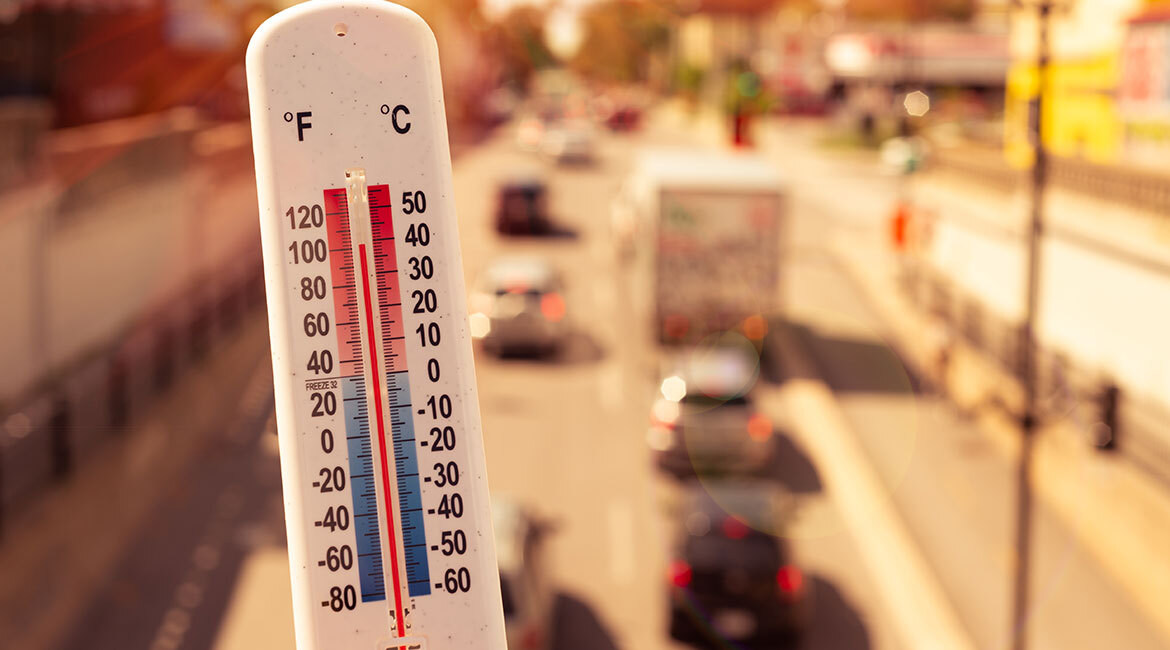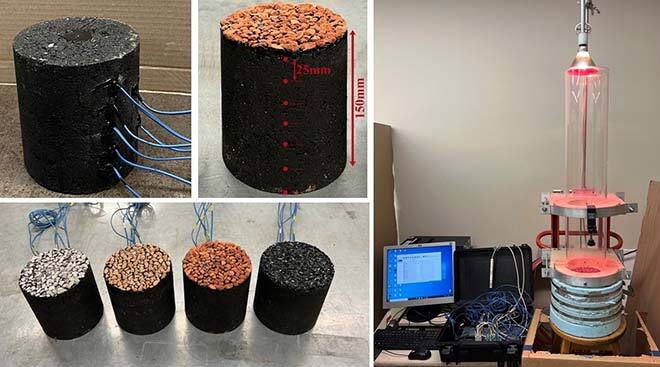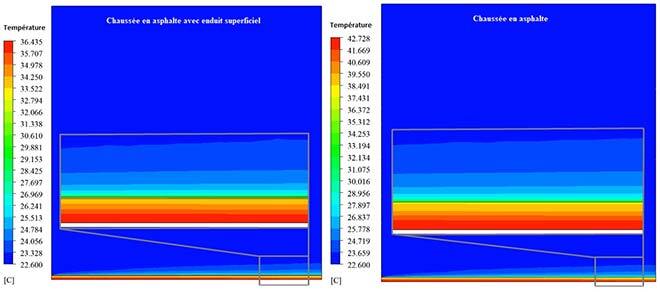
Abstract
The urban heat island (UHI) is an urban area with higher temperatures compared to suburban and rural areas. Higher city temperatures are believed to have knock-on effects contributing to global warming, including higher energy consumption, increased air pollution, heat-related illnesses, and deaths. The UHI is caused by some human urban activities and inventions, such as asphalt pavements. The dark surface of an asphalt pavement absorbs a considerable amount of solar energy during the day and releases most part of this energy at night, raising urban temperatures. In this research, recycled materials were used to increase the reflectivity of asphalt pavements, cooling down urban and asphalt pavement temperatures.
Keywords: Urban Heat Island; recycled materials; cool asphalt pavements; surface reflectivity
Asphalt Pavements: An Important Cause of Temperature Increase
The reflectivity of asphalt pavements plays an important part in the amount of heat absorption in asphalt pavements. The higher their reflectivity, the lower the observed temperatures. Thus, increasing surface reflectivity can be an effective method to decrease heat absorption in asphalt pavements. One method many researchers favor is using light-color pigments and coatings. However, these coatings may reduce skid resistance—causing safety issues—and could be expensive as they require regular maintenance.
The novel method used in this research was to increase the reflectivity of asphalt pavement surfaces with recycled materials. For this purpose, recycled materials, including clay brick, concrete, and glass, were used as chip seal aggregates. Chip sealing is a preventive or corrective maintenance method that can seal pavement cracks, increasing the skid resistance and lifespan of pavements. Chip seals comprise a layer or multiple layers of aggregates on top of a thin bitumen layer or bitumen emulsion. The recycled aggregates were used to develop novel chip seals to increase the surface reflectivity of asphalt pavements.
Evaluating Heat Absorption and Temperature Variation
In this research, different experimental, numerical, and field methods were used to evaluate the durability of the developed chip seals and their effects on surface reflectivity and urban heat island mitigation. As an example of the numerous methods used in this study, the solar simulation test—to measure surface and in-depth temperatures of asphalt pavement coated with the chip seals—is demonstrated in Figure 1. As we can see, a tungsten iodide (infrared) lamp was used to simulate solar radiation, and thermocouples were placed to measure temperature variations at different depths. Finally, the maximum surface and in-depth temperatures of each asphalt mixture specimen coated with chip seals were recorded for 24 hours, with a 9-hour nighttime simulation. Results showed that using yellow clay brick as chip seal aggregates exhibited a favorable performance, increasing reflectivity by 250% and dropping surface temperature by 23%.

Modeling to Assess Air Temperature Variations
Although laboratory and field tests revealed that using the developed chip seals can reduce asphalt pavement surface and in-depth temperatures, it was very difficult to measure their impact experimentally on surrounding air temperatures. Thus, a numerical model was developed with the experimental data using the ANSYS Fluent software.
Two different models—a conventional asphalt mixture and an asphalt mixture coated with a yellow brick chip seal—were developed to simulate real field situations. The thermal properties of these models were obtained from laboratory tests. Considering the modeling specifications, analysis results of the models revealed that using recycled yellow clay aggregates dropped the surrounding air temperature by 18%.
A conventional asphalt pavement and the asphalt pavement coated with the chip seal and their surrounding air temperature variations, obtained from ANSYS Fluent, are depicted in Figure 2. As we can see, the overall temperatures of asphalt pavement coated with the chip seal and the surrounding air are lower than the conventional asphalt pavement, decreasing urban temperatures in the summer.

Conclusion
On the one hand, the dark surface of asphalt pavements is a contributing factor to an environmental issue for cities known as urban heat islands (UHI). On the other hand, construction and demolition waste generation has been rising due to population growth. This study offers a novel method to recycle these waste materials at low costs and reduce the negative impact of asphalt pavements on the UHI effect. The results of laboratory, field, and numerical methods showed similar trends, revealing the benefits of using these recycled aggregates in road pavement chip seals to alleviate UHI and cool down urban temperatures in the summer.
Additional information
For more information on this topic, please see some of our published papers listed below:
Shamsaei, M., Carter, A., Vaillancourt, M., 2023. Using Construction and Demolition Waste Materials to Develop Chip Seals for Pavements. Infrastructures 8, 95. https://doi.org/10.3390/infrastructures8050095
Mammeri, A., Vaillancourt, M., Shamsaei, M., 2023. Experimental and numerical investigation of using waste glass aggregates in asphalt pavement to mitigate urban heat islands. Clean Technol. Environ. Policy. https://doi.org/10.1007/s10098-023-02481-8
Shamsaei, M., Carter, A., Vaillancourt, M., 2022. A review on the heat transfer in asphalt pavements and urban heat island mitigation methods. Constr. Build. Mater. 359, 129350. https://doi.org/10.1016/j.conbuildmat.2022.129350



